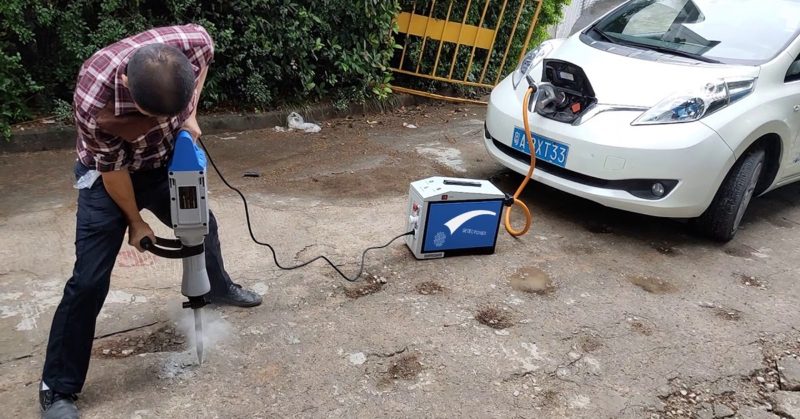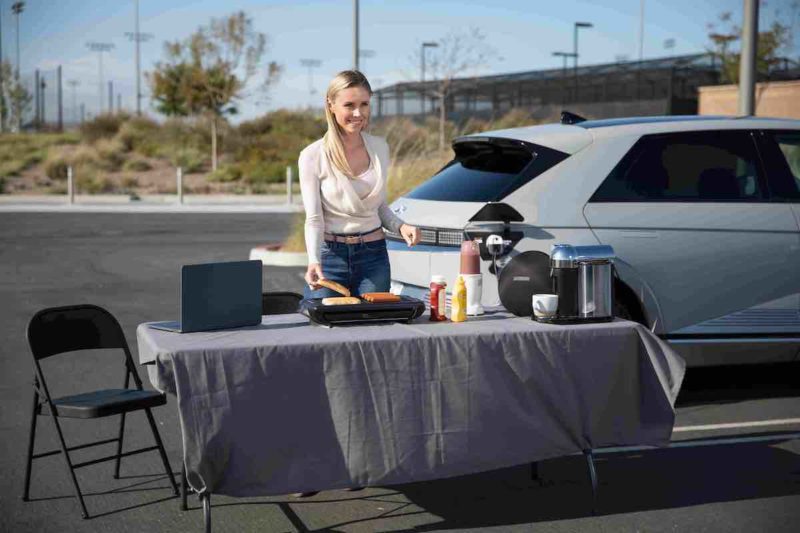This is Part two of the response to William’s recent query to The Driven about second hand vehicle options and vehicle to load (V2L).
…. And secondly, regarding the BYD Atto 3 which is supposedly V2L, could I use it to top up my off-grid lead acid batteries with my 240 volt AC battery charger instead of using the petrol generator when the SOC drops below 90% (I live in southern Tasmania and need to top up the batteries usually after three overcast days – which happens 10 – 20 times per year).
We have been off grid for 14 years now and are very keen to own an EV, both as an auxiliary home battery and principal vehicle, but like many retired people, we don’t have the funds to lash out.
Best wishes,
William
Hi again William – as I said in my previous reply: your question was so good it deserved not one, but two detailed answers!
Your first question related to upgrading a current Nissan Leaf battery sometime in the future, whilst your second relates to the vehicle to load (V2L) capacity of the BYD.
Putting two and two together, it would seem that an important EV choice criterion for you is the capacity to provide 240V AC electricity from the EV battery. In your off-grid situation, that makes eminent sense!
Therefore, this second article focuses on the different approaches taken to V2L by the older CHAdeMO and newer CCS charging systems and which to choose.
When it comes to V2L, as well as vehicle to home (V2H) and vehicle to grid (V2G), CHAdeMO utilises the DC port to provide the power. As a result, the output from the EV is around 300 to 400V DC and needs to be converted to 240V AC.
This requires an expensive bit of kit called a DC to AC inverter. Unfortunately, whilst there are a number of these available in Japan (providing Japanese 100/110V AC), none are available for sale here in 240V.
(As an aside: even for V2H and V2G, only one CHAdeMO V2X unit has been approved for general use, and only in one state of Australia – this being the Quasar unit by South Australia).

On the other hand, the newer CCS system uses the car’s inbuilt AC to DC rectifier and the AC charging port to provide V2L. This means the car’s on-board charger is built to act as an AC to DC rectifier as well as in reverse as a DC to AC inverter – and you don’t need to buy one.
All you need for CCS V2L is either a simple three pin adaptor to plug into the AC charge port or (for some EVs – like the LDV eT60), plug directly into the three pin socket outlet provided inside the car.

The outcome is that whilst a Nissan Leaf, Mitsubishi iMiEV (and some Outlanders) can theoretically provide V2L from their CHAdeMO charging port: no units to do so are approved and available here.
As a result, I would recommend that if you are choosing an EV to provide V2L AC power, choose a CCS socket equipped EV that offers V2L.
Given CHAdeMO is now effectively a superseded system, new inverters and/or V2X systems at 240V are unlikely to be developed for it (or existing ones get cheaper) going forward from here. Furthermore, as you can also see from the images: the CHAdeMO V2L unit is a lot bigger to lug around!

Coming back to your question, William, regarding using a BYD Atto 3 to top-up your off-grid battery system: as you can see from Table 1, the Atto 3 will comfortably supply a 2200W or less inverter.
However, unlike the coming MG4 as well as the current MG ZS EV and Ioniq 5 (along with its siblings on the e-GMP platform – the Kia EV6 and Genesis GV60), the BYD does not have the ability to select a discharge ‘floor’ (for example, no lower than 70%) so you could flatten the battery to its fixed 15% level if you left the V2L system unattended. (Mind-you, even at a steady 2200W, this would still take around 24hrs to do in a long-range BYD).
A simple plug-in timer on the AC output would be enough to avoid this potential problem though.
When will CCS be capable of V2H/V2G?
For those of you wanting V2H or V2G capability in non-CHAdeMO equipped EVs, you will need to hold your breath for a little longer.
As I wrote back in 2020, there is a roadmap for the development of V2X in the CCS charging system. (‘V2X’ being the generic acronym for bidirectional electricity to/from an EV battery).
However, it won’t be fully in place until 2025. Mind-you, half of that timeline has passed since I wrote that article and they appear to be ahead of schedule: a number of manufacturers (most notably VW and Volvo/Polestar) have announced that their EVs will be V2X capable over the next 12 to 18 months.
After that, it will be a matter for equipment manufacturers to complete their development of V2H/V2G systems and have them approved for use.
Therefore, for those of you here in Australia who are interested in installing a V2H or V2G system to go with your EV (provided you have a later one that is V2X capable): 2025 would seem a reasonable date to mark on your calendar to start seriously looking into V2H/V2G for your home.

Bryce Gaton is an expert on electric vehicles and contributor for The Driven and Renew Economy. He has been working in the EV sector since 2008 and is currently working as EV electrical safety trainer/supervisor for the University of Melbourne. He also provides support for the EV Transition to business, government and the public through his EV Transition consultancy EVchoice.


